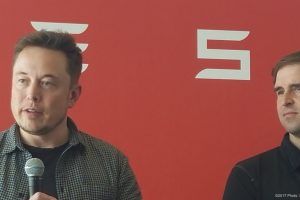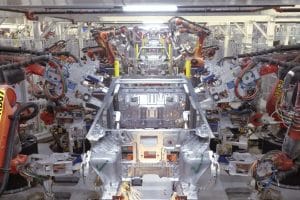- 🚗 General Motors’ Cruise plans to restart autonomous vehicle tests in California after losing its permit due to a robotaxi accident.
- 📍 Cruise has begun deploying manual mapping vehicles in Sunnyvale and Mountain View and will conduct supervised testing later this year.
- 🤝 Re-engaging with California regulators and stakeholders is a key focus for Cruise to ensure local employee involvement and tech refinement.
- 🚦 A pedestrian accident involving a Cruise robotaxi led to the suspension of its self-driving permit by the California DMV.
- 🔄 Following the accident, GM and Cruise have been restructuring and attempting to regain trust from regulators and consumers.
- 🚀 Cruise has resumed supervised testing in Arizona and plans to relaunch driverless ride-hailing services soon.
The road to autonomous driving has been an ambitious journey for many companies, particularly for Cruise, a General Motors-run driverless ride-hailing company. After facing significant setbacks last year due to an unfortunate incident involving one of its robotaxis, Cruise is now set to restart its autonomous vehicle tests in California. This blog post delves into the circumstances surrounding Cruise’s operational pause, their strategic initiatives for re-engagement with regulatory bodies, and the path forward for their innovative technology.
The Backstory: A Permit Suspended
In the fast-paced world of autonomous vehicles, setbacks can occur. Cruise faced one such significant challenge when a pedestrian accident involving their robotaxi led to the suspension of their self-driving permit by the California Department of Motor Vehicles (DMV). This incident not only halted their testing capabilities but also paused their operational revenue streams as they were required to cease their driverless ride-hailing services in San Francisco.
Steps Towards Recovery
- Reestablishment of Testing Grounds
Cruise’s proactive approach to recovery involves commencing manual mapping exercises. These tasks have begun in prominent areas like Sunnyvale and Mountain View, California—regions well-known for their bustling tech environments. By relaunching supervised testing of five autonomous vehicles later this year, Cruise aims to methodically ensure the safety and reliability of its systems. - Regulatory Compliance and Communication
Key to Cruise’s strategy is robust engagement with California regulators and stakeholders. Cruise has made it clear that adhering to regulatory directives and facilitating direct interactions with local employees and technology is pivotal. This ensures that as they resume testing, all involved parties are aligned with the safety standards and technological advancements Cruise aims to integrate. - Learning and Adapting from the Arizona Experience
Cruise has already undertaken supervised testing in Arizona. This experience provides valuable insights into operational and technical adjustments needed for their systems. By leveraging these learnings, Cruise can refine its approach to the more complex terrains and regulations of California.
The Strategic Vision Forward
The current developments signal a clear path forward for Cruise. Their structured approach not only focuses on technological refinement but also emphasizes building confidence among consumers and regulators.
- Technological Refinement
These initiatives are centered around robust research and development, enabling Cruise to enhance safety protocols and system reliability. Efforts are being made to develop new technologies that can detect and adapt to dynamic road conditions, ensuring the safety of both passengers and pedestrians. - Rebuilding Trust
Trust is a cornerstone for advancing autonomous technologies. Cruise’s transparent communication, structured interaction with stakeholders, and commitment to improving safety measures stand as a testament to their dedication to rebuilding trust with the public and regulatory entities.
Conclusion
Cruise’s path is emblematic of the broader challenges and triumphs in the autonomous vehicle sector. By addressing past setbacks with a clear strategy, engaging stakeholders directly, and learning from past experiences, they are pacing themselves meticulously towards a future where autonomous vehicles might become an integral part of urban mobility. As Cruise moves ahead, the spotlight remains on how successfully they can integrate technology while maintaining the highest standards of safety and efficiency.





